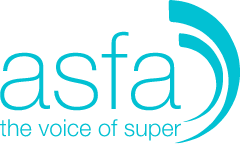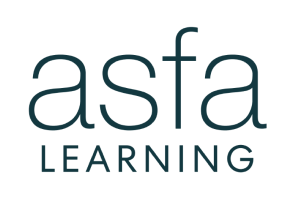Winter will be a hectic season for the superannuation industry, as it responds to the long-awaited draft report from the Productivity Commission, prepares to transition to a new dispute resolution framework, and deals with a myriad of other regulatory developments.
Productivity Commission draft report
Following a three-stage review of the superannuation system commencing in 2016, the Productivity Commission has released its draft report, Superannuation: assessing efficiency and competitiveness. The landmark report proposes substantial reforms to the industry, including a new method of allocating members to default products.
The Commission considers that Australia’s super system needs to adapt to better meet the needs of a modern workforce and a growing pool of retirees. In the Commission’s view, structural flaws—unintended multiple accounts and entrenched underperformers—currently harm a significant number of members. According to the Commission, fixing these issues could benefit members around $3.9 billion each year, with the balance for a new job entrant today lifted by $407,000 when they retire in 2064.
The Commission’s assessment of the superannuation system revealed mixed performance:
- while some funds consistently achieve high net returns, a significant number—including some default funds—underperform markedly
- fees remain a significant drain on net returns, even though reported fees have trended down on average
- there are around 10 million unintended multiple accounts, which erode members’ balances through unnecessary fees and insurance
- the system offers products and services that meet most members’ needs, but members lack access to quality, comparable information to help them find the best products
- many members see their retirement balances eroded by duplicate or unsuitable insurance policies.
The Commission concluded that these outcomes have arisen due to inadequate competition, governance and regulation. In particular:
- rivalry between funds in the default segment is superficial, and there are signs of unhealthy competition in the choice segment
- the default segment outperforms the system on average, but the way members are allocated to default products leaves some exposed to the costly risk of being defaulted into an underperforming fund, eroding their super balance by retirement
- regulations (and regulators) focus too much on funds rather than members, and subpar data and disclosure inhibit accountability to members and regulators
- while policy initiatives have chipped away at some of the problems, more changes are needed.
To address the issues, the Commission has recommended a package of reforms, including:
- a new default model, with members only ever allocated to a default product once, upon entering the workforce, and empowered to choose their own super product by being provided a ‘best in show’ shortlist of up to ten funds
- an elevated threshold for MySuper authorisation, including an enhanced outcomes test
- stronger governance rules, especially for board appointments and mergers
- reforms to ensure funds provide insurance that is valuable to members – including strengthening the industry’s code of practice and making it enforceable
- enabling regulators to become ‘member champions’, confidently and effectively policing trustee conduct, and collecting and using more comprehensive and member-relevant data.
Submissions on the draft report close on 13 July.
New dispute resolution framework – major developments
The government recently authorised the Australian Financial Complaints Authority (AFCA) as the new external dispute resolution (EDR) body for financial services. AFCA will replace the Superannuation Complaints Tribunal (SCT) and Financial Ombudsman Service, and will commence to hear complaints from 1 November 2018. The SCT will continue to operate for a period to clear its existing caseload, but cannot accept new complaints after 31 October 2018. Financial firms, including trustees of APRA-regulated superannuation funds, are required to be members of AFCA by 21 September 2018.
AFCA has issued a draft of its proposed rules for consultation, along with draft terms of reference for the AFCA independent assessor. Once finalised, the rules will effectively form part of a contract between AFCA and its member firms. They will form a critical part of the dispute resolution framework for trustees, operating alongside provisions in the Corporations Act 2001 as amended by the Treasury Laws Amendment (Putting Consumers First – Establishment of the Australian Financial Complaints Authority) Act 2018, and regulatory guidance to be issued by ASIC.
To support the transition to the new EDR arrangements and the establishment of AFCA, ASIC has provided financial services providers with conditional disclosure relief in relation to EDR arrangements. In general terms, ASIC Corporations (AFCA Transition) Instrument 2018/447:
- exempts providers from the requirement to give a ‘significant event notification’ under section 1017B of the Corporations Act in relation to the commencement of AFCA
- provides transitional relief until 1 July 2019 for financial firms to update prescribed disclosure documents that are required to include reference to EDR arrangements. This covers product disclosure statements, periodic and ‘exit’ statements, financial services guides and statements to a non-member spouse in relation to a family law superannuation split.
In order to qualify for the disclosure relief, a provider must ensure that, from 1 November 2018:
- information about the AFCA scheme and how it may be accessed (‘AFCA information’) is made available on the provider’s website
- AFCA information is included in any document which:
- purports to describe dispute resolution arrangements applicable to financial services provided by the provider (whether or not the document also includes other matters)
- is made available by the provider to persons who have or may receive financial services from the provider as retail clients.
- the documentation relating to the provider’s internal dispute resolution (IDR) procedure includes the AFCA information.
ASIC has also updated Regulatory Guide RG 165 Licensing: Internal and external dispute resolution, to reflect the relief and impose new requirements for IDR final response letters and ‘delay letters’ – letters advising that the provider has been unable to respond to a complaint or dispute within the requisite timeframe.
In particular, IDR final response letters and ‘delay letters’ issued on or after 21 September 2018 and before 1 November 2018 must refer to both the relevant predecessor EDR scheme and AFCA. Letters issued from 1 February 2019 must contain references only to AFCA. Letters issued between 1 November 2018 and 1 February 2019 may continue to include references to both schemes, provided it is clear that only AFCA can receive complaints after 1 November 2018.
Superannuation prudential framework: APRA review
APRA has launched a detailed post-implementation review of the superannuation prudential framework introduced following the 2013 Stronger Super reforms. The aim of the review is to ensure the prudential and reporting standards, and related guidance, have achieved their objectives and continue to remain fit for purpose.
To commence the review, APRA has issued:
- an overarching discussion paper which outlines the purpose of the review and review process, and includes questions that seek feedback on the superannuation prudential fr
amework as a whole - two short topic papers on governance and risk management.
Over the coming months APRA will release short consultation papers covering another four topics addressed in the prudential framework – financial requirements, operational risk and outsourcing; investments; insurance; and member flows and products.
Submissions on all the consultation papers will be due by 26 September. APRA expects to release a final report on the superannuation post-implementation review by early 2019.
Other important developments
There have also been many other important developments since the last rules and regs. The most significant of these are summarised below:
Super guarantee amnesty: Treasury Laws Amendment (2018 Superannuation Measures No 1) Bill 2018 (“2018 Superannuation Measures No 1 Bill”), introduced into Parliament on 24 May, provides for a one-off 12 month amnesty to encourage employers to self-correct historical superannuation guarantee (SG) non-compliance. Under the amnesty, penalties applicable to historical SG non-compliance will be reduced to nil, and the ATO ‘administrative component’ of the SG charge will be waived, where an employer voluntarily discloses their non-compliance to the ATO and pays an employee’s full SG entitlement (including nominal interest). Employers will also be able to claim a tax deduction for contributions made during the amnesty period.
Partial SG opt-out: the 2018 Superannuation Measures No 1 Bill also provides for higher income earners with multiple employers to partially opt-out of SG coverage, to prevent inadvertent breaches of the concessional contributions cap. The measure was announced in the 2018-19 Budget and will apply to SG quarters commencing 1 July 2018.
Integrity amendments for 2016-17 Budget reforms: the 2018 Superannuation Measures No 1 Bill also includes amendments to rules around non-arm’s length income and the ‘total superannuation balance’. The measures prevent individuals inflating fund earnings through non-arm’s length dealings. This has been used by some individuals as a strategy to increase superannuation savings in a way that is not caught by the contributions caps, particularly in light of changes to the contributions caps and the Division 293 tax on contributions following the 2016-17 Budget. The measures also amend the ‘total superannuation balance’ rules to ensure that, in certain circumstances involving limited recourse borrowing arrangements, the total value of a superannuation fund’s assets is taken into account in working out individual members’ total superannuation balances.
Compassionate grounds: the government has set 1 July 2018 as the date that regulatory responsibility for approving the release of benefits on compassionate grounds will transfer from Medicare to the ATO. The Treasury Laws Amendment (Release of Superannuation on Compassionate Grounds) Regulations 2018 have been made to streamline and improve the approval process.
Victims of crime compensation: the government has undertaken consultation on proposals to provide victims of crime with access to a perpetrator’s superannuation in certain circumstances.
APRA thematic reviews: APRA has released the findings from its recent thematic reviews into board practices in the superannuation industry, and related party arrangements for registrable superannuation entity licensees.
Employer sub-plans: ASIC has issued ASIC Corporations (Amendment) Instrument 2018/474 to further defer the application of the website disclosure rules in section 29QB of the Superannuation Industry (Supervision Act) in relation to information about employer sub-plans until 30 June 2024.
Superannuation platforms: ASIC has issued ASIC Corporations (Amendment) Instrument 2018/473 to further defer the application of the shorter product disclosure statement regime to multi-funds, superannuation platforms and hedge funds until 30 June 2022.
Retirement income covenant: The government has undertaken consultation on proposed principles for the introduction of a retirement income covenant into the Superannuation Industry (Supervision) Act 1993. This follows the government’s Budget announcement that it would introduce a retirement income covenant as part of a retirement income framework, requiring trustees to develop a retirement income strategy for their members.
ATO reporting: The ATO has consulted on a draft legislative instrument setting the timeframe for a superannuation provider to give it a Member Account Transaction Service (MATS) form under the new event-based reporting framework. The MATS form is the virtual approved form that superannuation providers (excluding self-managed superannuation funds) and life insurance companies must use to report information regarding an individual’s superannuation account transactions, including contributions, to the ATO. Under the draft instrument a MATS form must generally be lodged within 10 days of a reportable event, however member contribution balance amounts must be reported no later than 31 October after the end of the financial year to which the amount relates. MATS reporting will commence from 1 July 2018 with a transitional period until 31 March 2019.
Superannuation investment in agriculture: The House of Representatives Standing Committee on Agriculture and Water Resources has inquired into barriers to increased investment in Australia’s agriculture sector by superannuation funds. The Committee took evidence on issues such as regulatory impediments, the availability of necessary information, and other practical barriers to investment.






